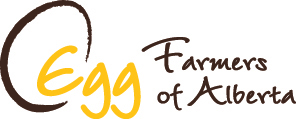This message is a reminder about food safety with respect to our eggs. Some of the info below is common sense but we feel we should remind you about some egg handling practices. Salmonellosis is a disease caused by bacteria that can be present in raw or undercooked food. Salmonella enteritidis is a type of salmonella bacteria which can be found outside and inside the egg.
Please be advised that our eggs are not inspected by registered grading facility. To protect yourself from Salmonella infection, refrigerate the eggs, do not eat undercooked eggs, and wash your hands after handling eggs. Having said that, our goal is to provide you with the best egg on the market. The Poultry Research Center takes a number of measures to improve food safety and minimize the risk of Salmonella and other foodborne infections. Our heritage chickens have a comprehensive animal health program developed by Veterinarians. The chickens are vaccinated against Salmonella and other infectious diseases. We test our flocks for Salmonella more frequently than required by regulations. The samples are tested by the Food Safety and Animal Health Division with the Government of Alberta. In the event of a positive test, we will discontinue sales of eggs immediately.
We are part of the national on-farm food safety program, known as Start Clean-Stay Clean™. Under the program, all regulated egg farms in Canada must meet a high standard and are inspected by trained officers employed by Egg Farmers of Canada. We follow strict on-farm biosecurity practices to control the potential entry of pathogens. The entry is restricted, and clothes and footwear are changed and the bottoms of shoes or boots are disinfected prior to entering bird housing areas. Only eggs laid in the clean nests are packaged for sale, not those that are sometimes laid on the floor by our free-run heritage chickens. Only eggs from the nest will reach your table. An additional level of quality assurance we take is egg candling. Automated scanning equipment is used to detect eggs with cracked shells and/or interior defects. During candling, eggs travel along a conveyor belt and pass over a light source where the defects become visible. Defective eggs are removed by trained operators.


